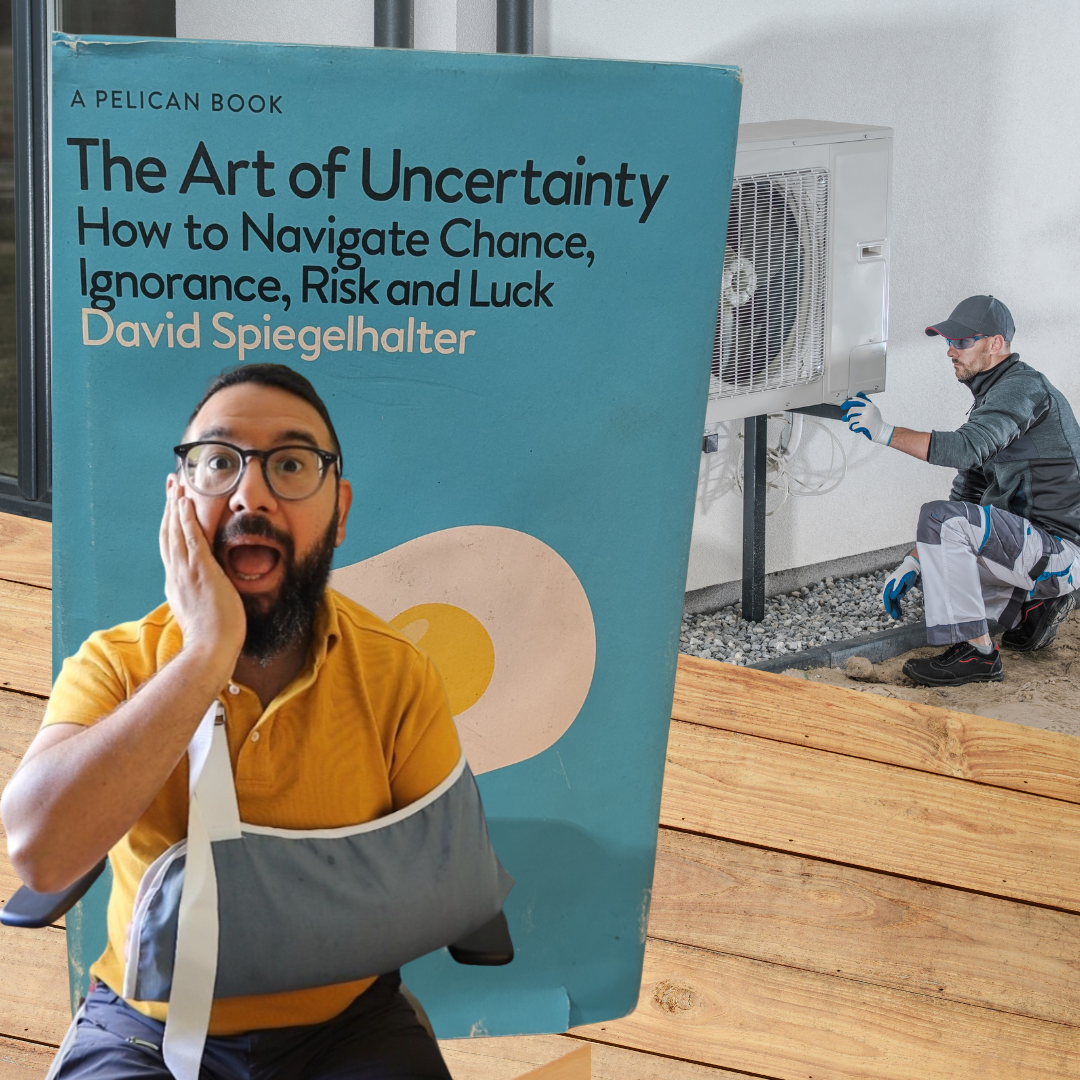Our relationship with risk.
A neighbor of mine is completing her MBA and she recently loaned me one of her books, “The Art of Uncertainty : How to navigate chance, ignorance, risk and luck.”
I found the book fascinating in how it helps readers understand probabilities in our lives. It added new tools in my professional and personal life on how to analyze risk and how to make the financial decision to either cover it, avoid it, or embrace it.
What is risk and what are the costs to mitigate it?
Risk is something that is both objective AND subjective. Different risks can affect us in different ways and sometimes NOT AT ALL. This will depend on our relationship with specific forms of risk.
The nature of our relationship with risks should determine what we need to protect and how much that might cost—which does not always mean 💸
First, let us begin with defining costs. I typically view them in terms of …
Economic cost: Bad stuff happens and that can cost money to fix it. It can also cost money to keep it from either happening or from affecting you.
Opportunity cost: Similar to economic costs, this can be interpreted as the missed opportunities that resulted from having spent money on one thing instead of another. E.g. Money spent on insurance instead of being invested.
Emotional cost: This is the impact an event might have on our psyche. We can lose confidence in our decision-making abilities. Another consequence can be the danger of falling into precarity—creating a sense of stress.
Let’s go shopping for a heat pump.
Recently I had to shop for a new heat pump for my house. When you have a better understanding of the probability of heat pump failure, you start to better calculate the potential costs.
The way I analyze it is to find the best balance of three costs I outlined above to reach my choice.
The risk of heat pump failure can be 0% if I simply do not own one.
But the discomfort of summer and winter in Canada can be terrible. There is also the need to be economically productive which can be enhanced by being comfortable when working from home.
So, I need to buy a heat pump. Because of the specific difficulty of Canada’s climate I need to understand how heat pumps perform in Canada.
Historically, Mitsubishi has made ultra dependable heat pumps but the acquisition price is high. Say, 16 000$.
The lowest priced competitor is around 8 000$, but consumer surveys show it to be on lower end of reliability.
The economic difference is HUGE.
You might also ask yourself: What if I invested the 8 000$ savings into an RRSP? This is opportunity cost.
But if the heat pump fails…and often AND costs me more money or discomfort? This is the emotional cost, and it could be HIGH.
What does data tell us?
If we read Protegez-vous’ annual survey, we can see that the highest-end brand has a great reputation. 90% of owners report having no problems. and 10% have required repair, but not replacement.
When I look at the lower-end model, the divide is 70% and 30%, respectively.
It might not be worth paying the 100% for only a 20% improvement. Plus each manufacturer and contractor provides a warranty on parts and labor.
High-end models have a 10-year warranty on parts and 5-10 year warranty on labor. Lower-end have 10-year warranty on parts and 1-to-5 year warranty on labor.
Obviously the higher-end is worth the costs, right?
The survey of 1,830 consumers shows that only 23% experienced heat pump failures.
From which 33% of them occurred in the first 12 months following installation.
This would mean that warranty for parts and labor would have covered it regardless of price range.
The probability of failure in the first year comes to 7.59%
Where as the probability of failure for each of the subsequent 9 years is 1.71%.
Cumulative probability of failure in the first 5 years is 14.43% and this drops to 8.57% in the remaining 5 years.
Buying a higher-end model with a 10-year warranty would simply not be worth 2x the price if the probability of failure is actually LOWER in the subsequent 5 years.
What did I end up choosing and why?
Given this data, paying 2x the price is simply not worth it considering most failures will occur in the first 5 years, and most vendors will cover that period.
In reviewing the reliability rates of each brand, I chose one brand that has a 92% reliability score compared to the 70% score of the lower-end model. This model, only ended up costing 1 350$ more.
However, this brand is only 5 years old! I’m taking a chance.
This makes it the most advantageous choice when it comes to price and value.
Economic costs: I will be able to save a substantial difference.
Opportunity costs: I can invest the difference.
Emotional costs: I will likely not feel stupid if something happens.
It is important to remember: this is ONLY a heat pump. It is an expensive purchase but there are other purchases that can be more costly, like, cars and homes.
There is also risk of a disability, death or critical illness which can be much more catastrophic for you and your family. However, things like age, gender, profession, and other factors can determine the probability of that risk happening in a given period of time.
But I do use similar calculations to evaluate the costs and benefits of insurance products and their features to help clients determine the best choice for you.
